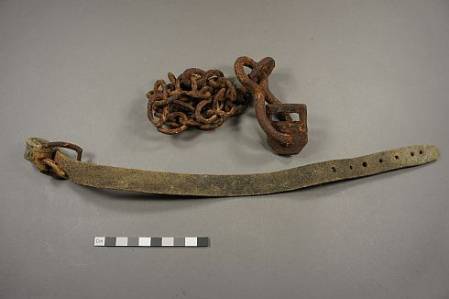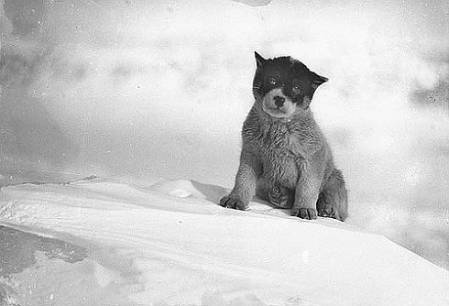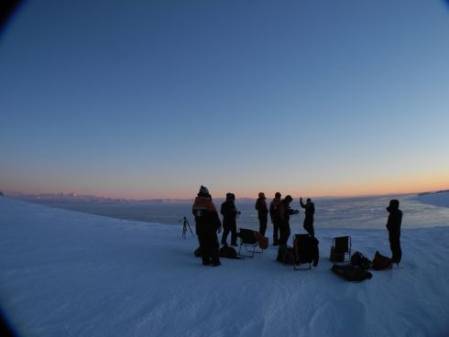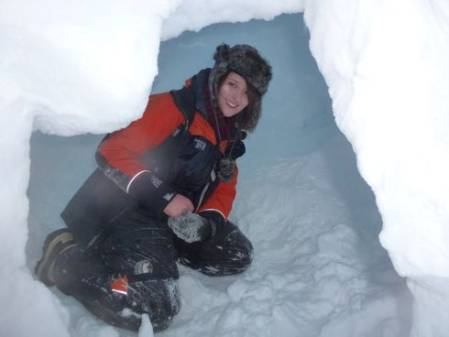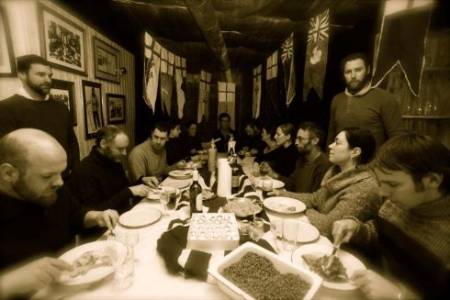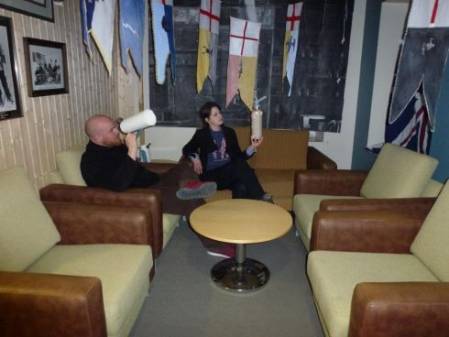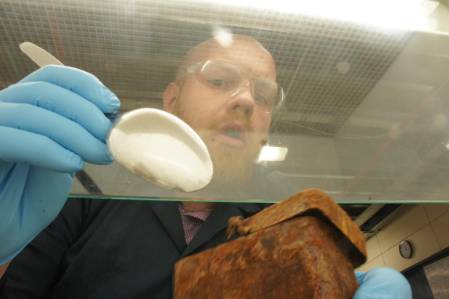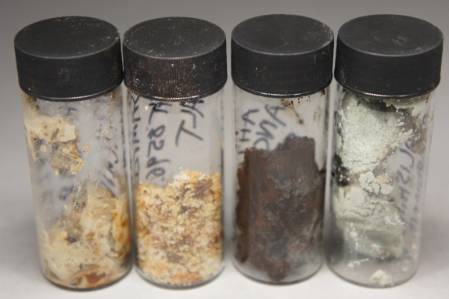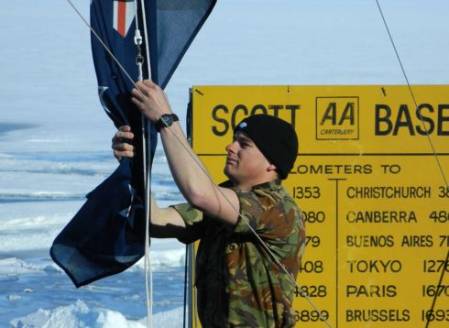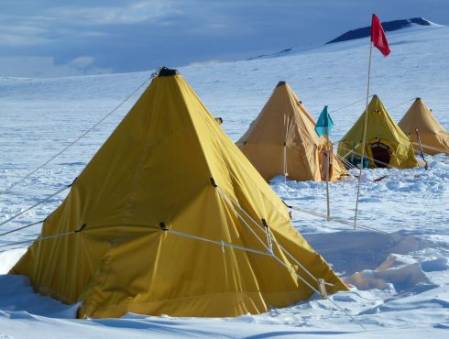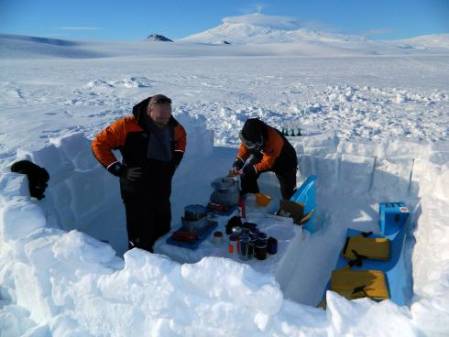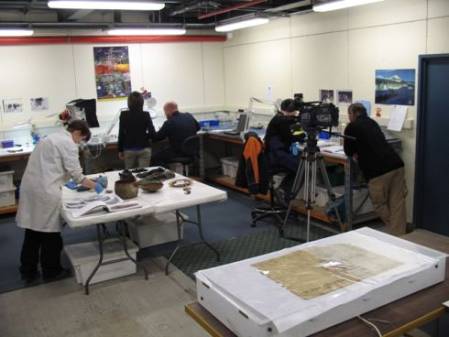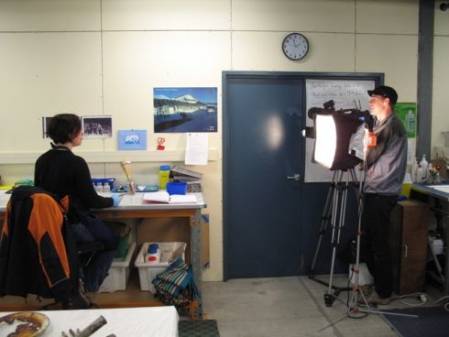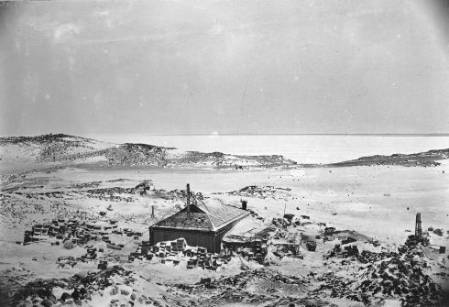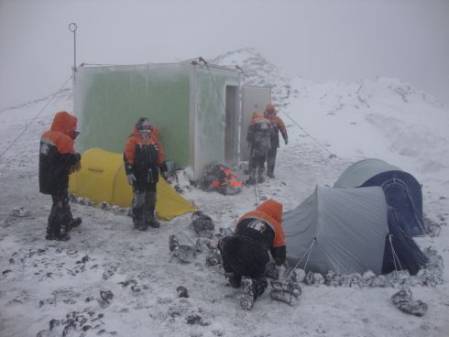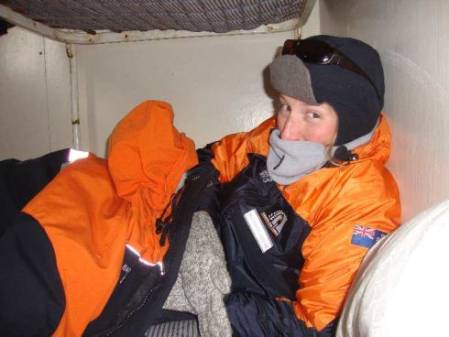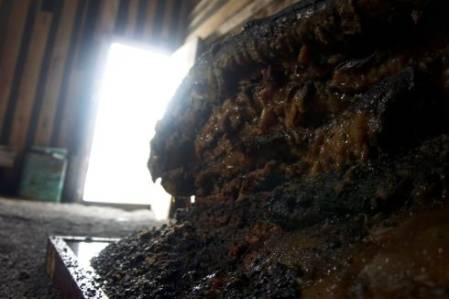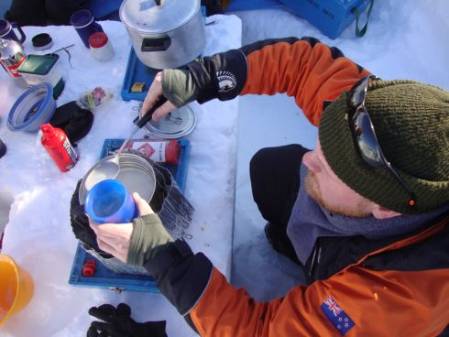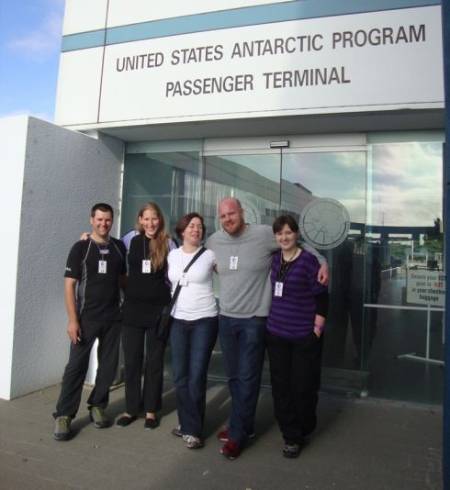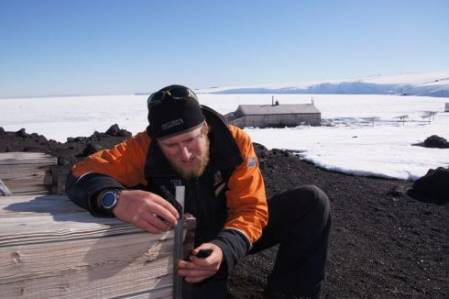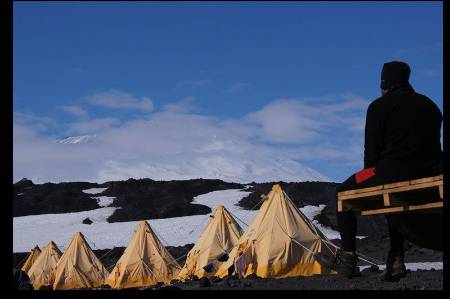Author: Susanne
Date: March 21, 2012
Temperature: -28.3°C
Wind Speed: 15 knots
Temp with wind chill: -62°C
Sunrise: 7:56AM
Sunset 8:00PM
When I am asked about my Antarctic experience, people are always curious about my favorite part. My answer: the people I meet!
The Antarctic Heritage Trust is logistically supported by Antarctica New Zealand, a government entity responsible for maintaining the base operations at Scott Base and supporting science events. The first time we meet the ten Scott Base crew that we are wintering with, is when we arrive on the ice. It’s always an exciting time since the summer season team is leaving and we are new faces to get to know. Over the past few months, we have spent more time with this spectacular crew and I also wanted to share the rest of their stories with you.
Shane is the Science Technician this year and originally hails from Queenstown, NZ. While his background is in electronics product design, he spends his time on the ice doing weather observations, maintaining the science experiments, and repairing electronics. After talking with Shane, I learned that his favorite part of being here is the winter family and that you can be yourself and find support in each other. He was attracted here by hearing about others good experiences and enjoys meeting and working with the types of people that come to Antarctica.

Shane at Discovery Point. Credit: Shane.
Naomi is the winter team First Aider and Domestic from Brisbane, Australia. In addition to living in New Zealand for 7 years, she has been attracted to living in different environments and has spent time in Africa and Canada. Coming to Antarctica is something she has always wanted to do and her favorite part has been the people! With a diverse background as an ambulance volunteer and world traveller, she enjoys the work schedule and hopes to be able to get career experience.

Naomi at Lake Vanda. Credit: Naomi.
Our winter chef this season is Bobbie from North Canterbury, NZ. Coming to Antarctica was a childhood dream and this is her second season with Antarctica New Zealand. Bobbie has a background in cafes and catering and produces some of the most incredible vegetarian dishes I have tasted. It helps that Bobbie herself is a vegan! She was attracted here by the mystery and magic that the continent holds and appreciates the fact that not a lot of people get to enjoy this opportunity. Her favorite part of the experience so far has been the view from the kitchen window! Not many chefs can wake up to a sunrise over the Antarctic continent!
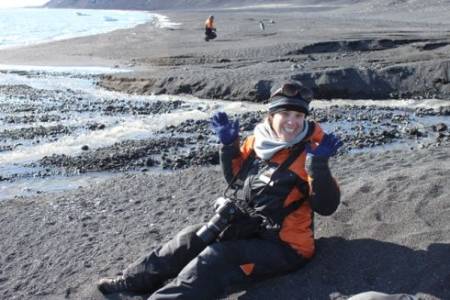
Bobbie at Cape Bird. Credit: Naomi.
Hayden is the Telecom technician for the season and is responsible for linking us with the outside world! Originally from Palmerston North, NZ, he studied telecommunications and specialised in wireless engineering. Also a world traveller, Hayden wanted to experience the remote ruggedness of Antarctica that few get to experience. During the summer he assisted with several science events and was able to see truly untouched areas such as the Dry Valleys and Darwin Glacier. His favorite part of being here is the entire experience and as he perfectly puts it, “to look out over the ice shelf and see an untouched place of beauty”. Hayden is also on the Search and Rescue team for Scott Base and I know that we are in good hands with his years of experience and his appreciation for the environment.

Hayden at the Darwin Glacier. Credit: Hayden.
Simon, our fearless winter base manager, is originally from Invercargill, NZ. In addition to leading the base through the winter, Simon serves as field support and coordinates outdoor activities and gear maintenance. With a background in the building trade, he has travelled extensively and worked on sites in NZ and Australia. Wanting to do something he was more passionate about, he pursued ski patrolling and guiding while getting a diploma in ambulance practice. With this experience he heads the Search and Rescue team at Scott Base. His favorite part of the experience here has been the opportunity to get outside and enjoy the beautiful and powerful place that Antarctica is.

Simon at the South Pole. Credit: Trudie
I have really been enjoying my time here and having the opportunity to spend the winter with such great people. It really is the team that makes this experience so special!
